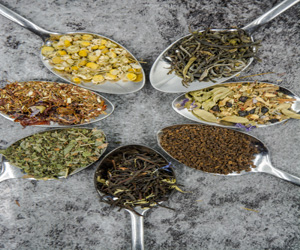


A Path To Health And Wellness

In a world increasingly filled with processed foods and synthetic chemicals, the significance of natural ingredients in our diets and everyday products cannot be overstated. Natural ingredients have been cherished for centuries, not only for their intrinsic flavors and textures but also for their numerous health benefits and environmental advantages. Let's delve into why natural ingredients are at the heart of a healthy and sustainable lifestyle.
Nutritional Powerhouses
One of the most compelling reasons to incorporate natural ingredients into your diet is their nutritional richness. Fruits, vegetables, whole grains, nuts, and seeds are natural sources of essential vitamins, minerals, and antioxidants that nourish our bodies. These elements play a pivotal role in preventing chronic diseases, boosting the immune system, and promoting overall well-being. They are unaltered by the chemical processes that synthetic ingredients often undergo, which ensures that their nutrients remain intact.
Flavor And Culinary Versatility
Natural ingredients infuse dishes with the vibrant flavors and aromas that no artificial additives can mimic. Fresh herbs, spices, and produce can elevate a simple meal into a culinary masterpiece. The versatility of these ingredients is unparalleled; they can be used to create a wide array of dishes that cater to various tastes and dietary preferences, from vegan to omnivorous.
Environmental Stewardship
Choosing natural ingredients is not only beneficial for your health but also for the environment. These ingredients are cultivated with minimal synthetic pesticides and fertilizers, reducing the carbon footprint of your diet. Moreover, supporting sustainable farming practices helps preserve biodiversity, conserve natural resources, and mitigate soil and water pollution. By opting for natural, organic, and locally sourced ingredients, you play a crucial role in the global movement towards sustainable agriculture and food systems.
Ethical Considerations
Natural ingredients also align with ethical values. They often result from ethical farming and production practices that prioritize animal welfare, fair labor, and community support. Organic and fair trade certifications ensure that the ingredients you consume are cultivated and harvested with care, without compromising the well-being of those involved in the process.
Skin And Body Care
Natural ingredients extend beyond the kitchen and into our self-care routines. They are the foundation of many skincare and beauty products. Natural oils, butters, and extracts are gentle on the skin, reducing the risk of irritation and adverse reactions. Furthermore, they are free from the harsh chemicals often found in synthetic products, promoting healthier and more radiant skin.
Holistic Wellness
Natural ingredients also play a vital role in holistic wellness practices, such as aromatherapy and herbal medicine. Essential oils and herbal remedies harness the therapeutic properties of natural ingredients to address physical, emotional, and mental health concerns. They offer alternative, often gentler, solutions to various ailments.
The power of natural ingredients is immeasurable. Their nutritional richness, culinary versatility, eco-friendly qualities, ethical implications, and holistic wellness applications make them a cornerstone of a healthy and sustainable lifestyle. By embracing natural ingredients in our diets, self-care routines, and everyday lives, we not only enrich our own well-being but also contribute to the greater good of our planet.




The Quest For The Ultimate Cup
 2. Grinding: The grind size of the coffee beans is crucial. It must be just right, neither too fine nor too coarse, to achieve optimal extraction. Professional-grade grinders allow minute adjustments to ensure precise control over the grind size.
2. Grinding: The grind size of the coffee beans is crucial. It must be just right, neither too fine nor too coarse, to achieve optimal extraction. Professional-grade grinders allow minute adjustments to ensure precise control over the grind size.
3. Water Quality: The quality of the water used is a often overlooked but critical factor. Clean, fresh water with the right mineral content is essential for brewing the perfect shot. It ensures that the flavors in the coffee are accentuated and not masked by impurities.
4. Brewing Temperature: Water temperature plays a fundamental role in extracting the desired flavors from the coffee grounds. Espresso demands hot water, typically between 195°F and 205°F (90°C to 96°C), to fully extract the complex aromatic compounds from the beans.
5. Pressure: Espresso machines apply high pressure, usually between 9 and 15 bars, to force hot water through the coffee grounds. This pressure not only ensures efficient extraction but also creates the luscious crema, the golden layer that tops the espresso.
A Culinary Hug For The Soul

One of the remarkable things about comforting dishes is their versatility. They can be found in virtually every culture, and each culture has its unique take on what constitutes comfort food. In the United States, it might be a classic grilled cheese sandwich and tomato soup. In Italy, a hearty plate of pasta al ragù. In India, a bowl of creamy, aromatic chicken tikka masala. The diverse nature of comforting dishes reflects the universality of seeking comfort through food.
Comforting dishes hold a special place in our hearts, not only because they taste good, but because they evoke powerful emotions. They are linked to cherished memories—family gatherings, holidays, or a friend's comforting gesture during tough times. The mere scent of a dish can instantly transport you to a place of happiness and security.
Cultivating A Healthier Planet And Society
 Local And Seasonal Sourcing: Sourcing food locally and seasonally is another fundamental aspect of the sustainable food movement. This approach is a response to the vast carbon footprint generated by long-distance food transportation. Choosing locally grown and seasonal ingredients reduces greenhouse gas emissions and supports local economies. It also encourages consumers to reconnect with the natural rhythms of their environment and to enjoy a diverse range of fresh, in-season produce.
Local And Seasonal Sourcing: Sourcing food locally and seasonally is another fundamental aspect of the sustainable food movement. This approach is a response to the vast carbon footprint generated by long-distance food transportation. Choosing locally grown and seasonal ingredients reduces greenhouse gas emissions and supports local economies. It also encourages consumers to reconnect with the natural rhythms of their environment and to enjoy a diverse range of fresh, in-season produce.
Reducing Food Waste: The sustainable food movement recognizes the global challenge of food waste. It calls for reducing waste at all stages of the food supply chain, from production and distribution to consumption. By preventing food from going to waste, we conserve resources, reduce the strain on landfills, and address issues of food scarcity and hunger.
Social Equity And Responsibility: Promoting social equity and responsibility is a core value of the sustainable food movement. It encompasses fair labor practices, food access for all, and the eradication of hunger. The movement seeks to eliminate disparities in access to nutritious, affordable food and strives for a world where food is a basic human right, not a privilege.
Healthy Eating: Healthy eating is a vital component of the sustainable food movement. It encourages a diet based on nutrient-dense, minimally processed foods. Sustainable food choices often align with healthier eating patterns, emphasizing fruits, vegetables, whole grains, and lean proteins. This approach not only supports individual well-being but also reduces the burden of chronic diseases on society.
Embracing A Gluten-Free Lifestyle
 Treatment With A Gluten-Free Diet
Treatment With A Gluten-Free Diet
The cornerstone of celiac disease treatment is the complete elimination of gluten from the diet. A gluten-free diet helps to prevent the autoimmune response and allows the small intestine to heal. When followed diligently, it can lead to symptom resolution and improved overall health.
Challenges Of A Gluten-Free Lifestyle
While a gluten-free diet is the only effective treatment for celiac disease, it presents numerous challenges:
Label Reading: Learning to decipher food labels and identify sources of hidden gluten can be overwhelming.
Cross-Contamination: Avoiding cross-contamination is crucial, as even trace amounts of gluten can trigger symptoms.
Social Situations: Navigating social gatherings and dining out can be challenging, as it often requires clear communication about dietary restrictions.
Sip Your Way To Health And Vitality
 Hydration And Wellness
Hydration And Wellness
Nourishing drinks, such as herbal teas, infused waters, and fresh fruit juices, help keep your body hydrated. Proper hydration is fundamental to overall health, as it supports digestion, detoxification, and cellular function. Staying well-hydrated is often the first step towards feeling energetic and vibrant.
Digestive Support
Many nourishing drinks are designed to promote healthy digestion. For example, a warm cup of herbal tea or a ginger-infused elixir can soothe the stomach and relieve indigestion. Probiotic-rich drinks like kefir and kombucha enhance gut health by introducing beneficial bacteria, which can aid in digestion and boost the immune system.
Antioxidant Power
Antioxidants play a vital role in protecting the body from oxidative stress and preventing cell damage. Nourishing drinks, particularly those made from dark leafy greens, berries, and other antioxidant-rich foods, offer a delightful way to boost your body's defense mechanisms.
A Taste Of Nostalgia And Culinary Delight

The appeal of classic comfort food extends beyond its sentimental value. These dishes are designed to satisfy not only our physical hunger but also our emotional cravings. Take, for example, a steaming bowl of chicken noodle soup. Its rich, savory broth and tender chunks of chicken soothe the soul and provide a sense of well-being. A slice of warm apple pie with a scoop of vanilla ice cream can transport us to a place of pure joy and indulgence. Whether it's the crispy, golden exterior of fried chicken or the creamy, cheesy layers of lasagna, classic comfort food speaks to our hearts as much as it does to our taste buds.
Classic comfort food varies from region to region and culture to culture. In the American South, it might be a plate of buttery, flaky biscuits and sausage gravy. In Italy, it could be a hearty bowl of spaghetti carbonara. In Japan, it might take the form of a comforting bowl of ramen. The diversity of classic comfort food reflects the rich tapestry of global culinary traditions, each offering its unique take on the concept of culinary solace.
The Timeless Pleasure Of Comfort Food

Family favorites are not just about taste; they are about tradition, heritage, and connection. The act of preparing and sharing these beloved recipes creates a sense of togetherness and unity. Cooking and enjoying these dishes with loved ones fosters a bond that transcends generations, ensuring that the flavors and traditions of the past remain alive and vibrant in the present.
In a fast-paced world, where daily life often seems to rush by, family favorites serve as a reminder of the importance of taking a moment to appreciate the simple pleasures in life. These dishes encourage us to slow down, gather around the table, and share a meal with loved ones. They offer an opportunity to create lasting memories and pass on the culinary traditions that have shaped our families.
Family favorites are not just about the recipes themselves; they are about the stories, the love, and the sense of belonging that accompany them. These dishes are the embodiment of the old saying, "Food is love made visible." They are a testament to the enduring power of comfort food, tradition, and the pleasure of sharing a meal with the people who matter most.
From Uncertainty To Culinary Confidence
 Exploring And Experimenting: As kitchen novices grow in confidence, they naturally gravitate towards exploration and experimentation. Trying out new recipes and different cooking methods becomes an exciting adventure. There's a sense of wonder in discovering how ingredients interact and how flavors meld together. The kitchen evolves from a place of intimidation to one of creative expression.
Exploring And Experimenting: As kitchen novices grow in confidence, they naturally gravitate towards exploration and experimentation. Trying out new recipes and different cooking methods becomes an exciting adventure. There's a sense of wonder in discovering how ingredients interact and how flavors meld together. The kitchen evolves from a place of intimidation to one of creative expression.
Building Culinary Confidence: Culinary confidence is a gradual byproduct of this journey. It's the point where kitchen novices realize that they have not only acquired skills but also developed a passion for cooking. The satisfaction of preparing a delicious meal or mastering a challenging dish is immensely rewarding. Kitchen novices begin to relish the act of cooking and take pride in serving their culinary creations.
Culinary Evolution: The beauty of being a kitchen novice is that it's a phase that eventually gives way to culinary expertise. Novices become more skilled, more daring, and more passionate about cooking. The once-daunting kitchen becomes a realm of comfort and creativity.